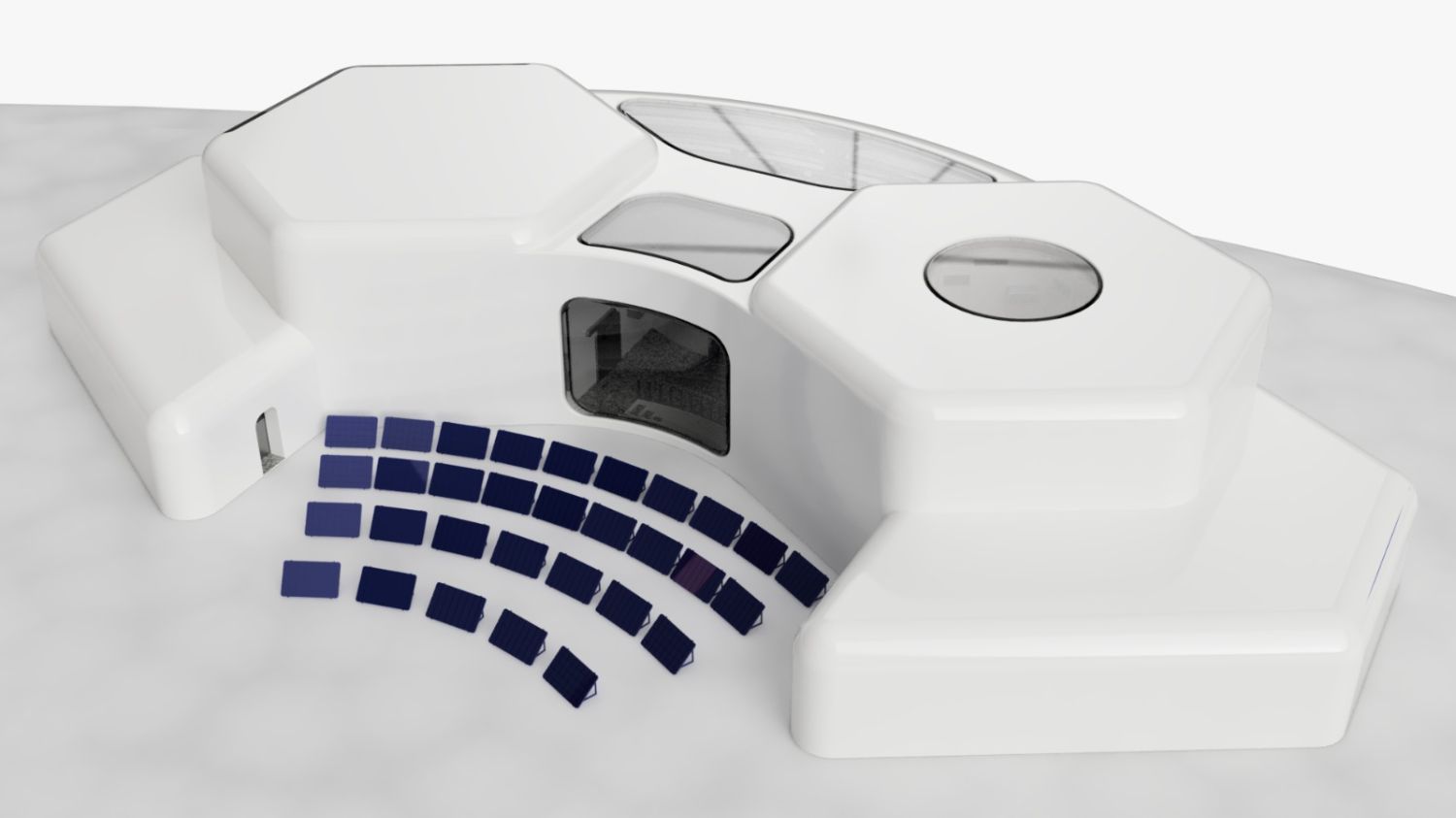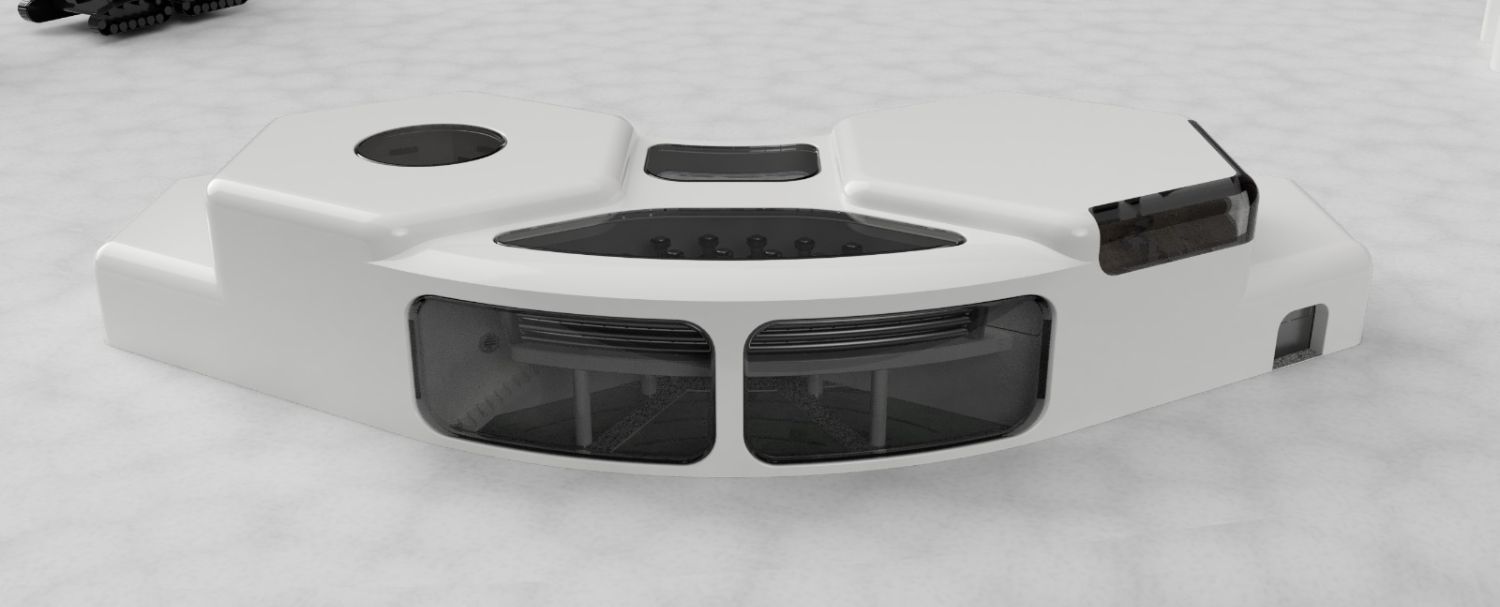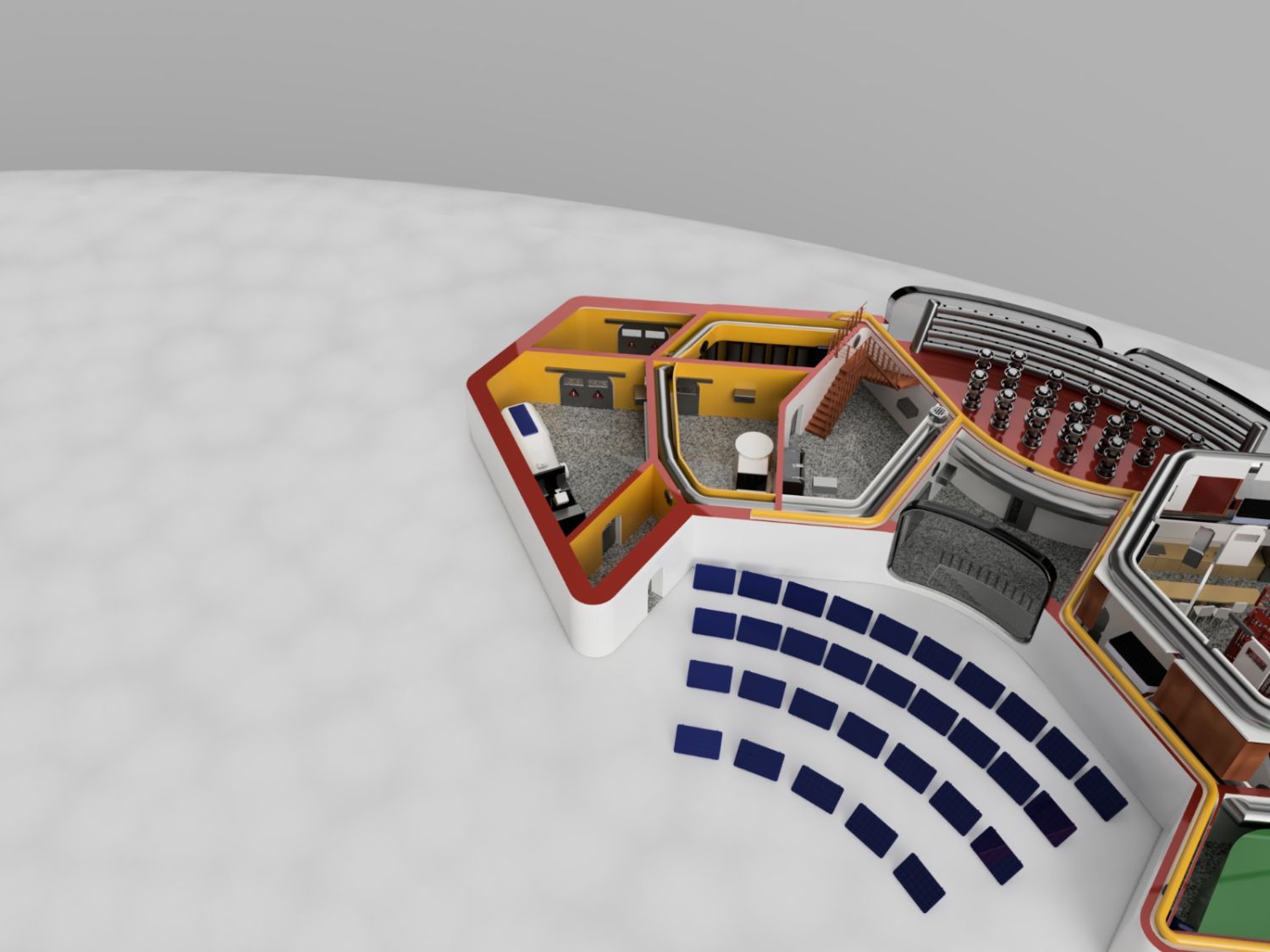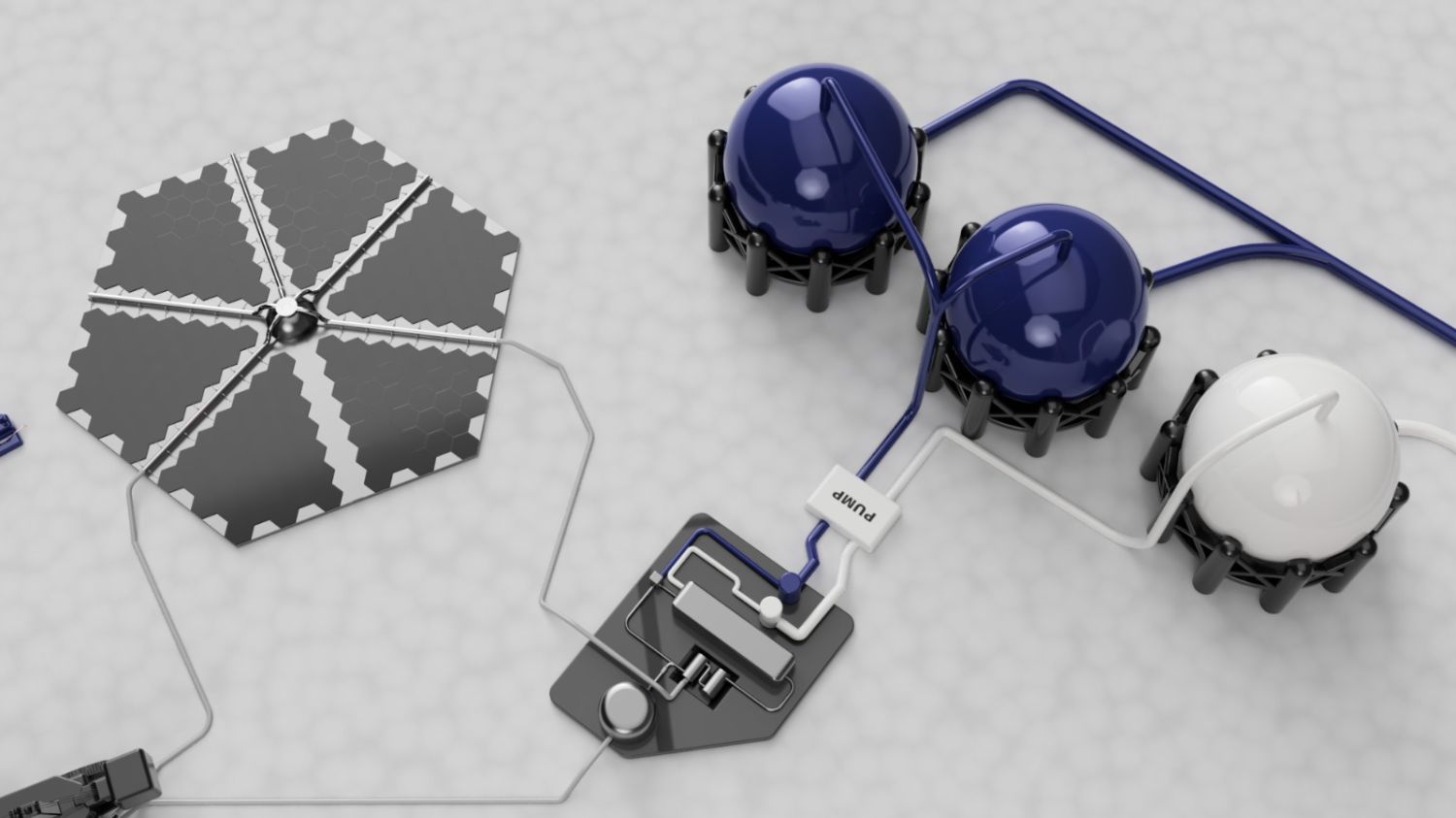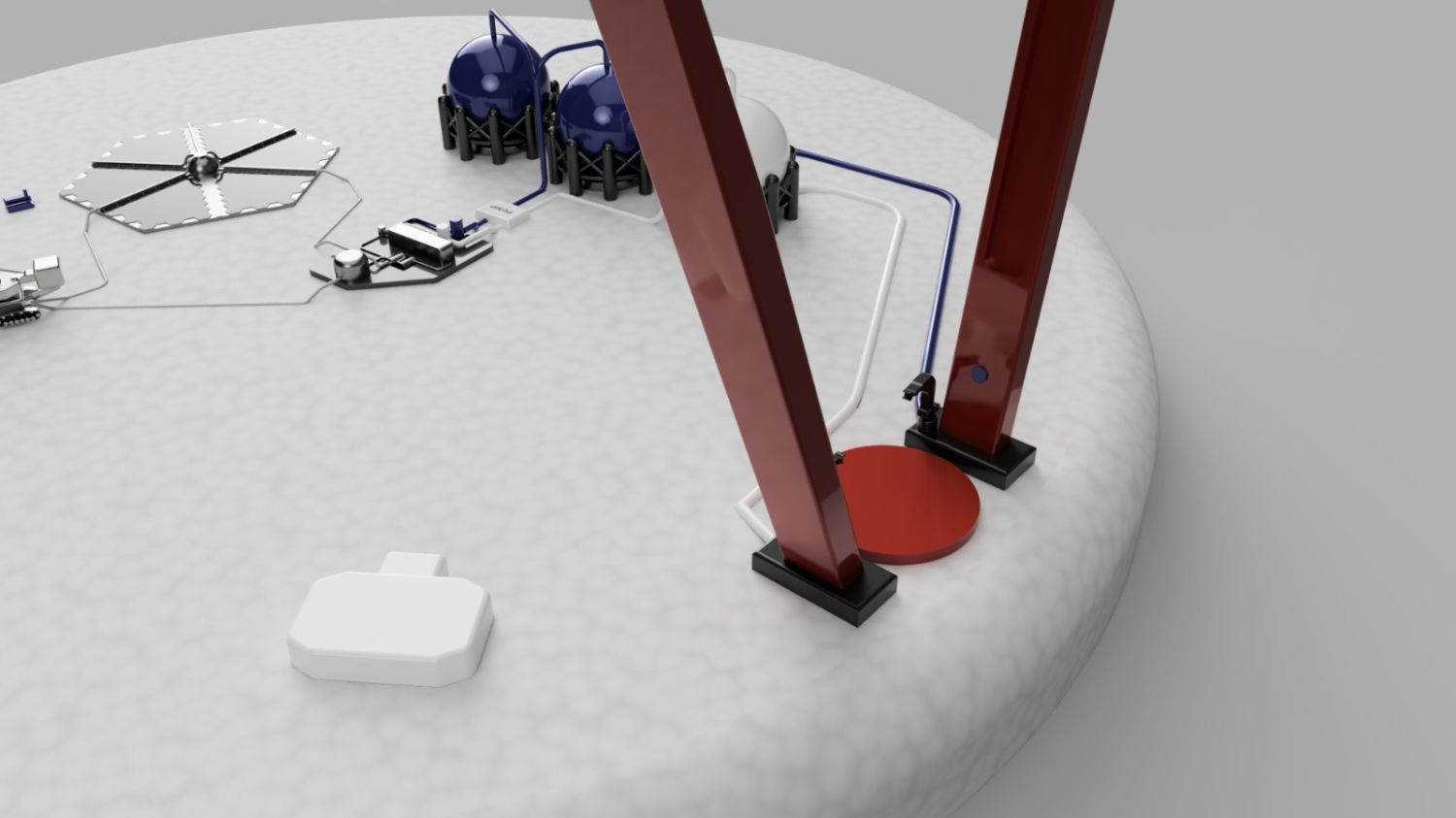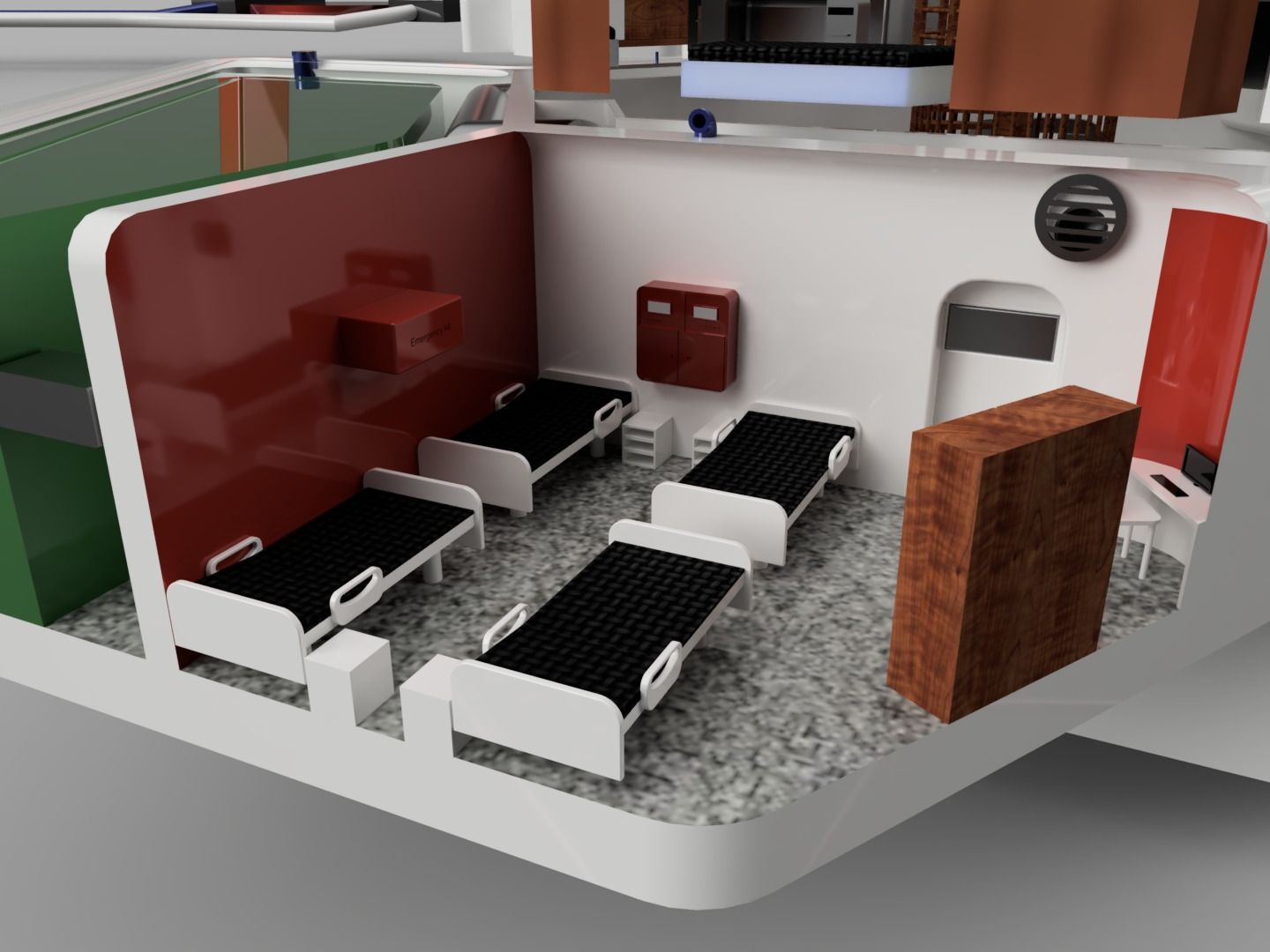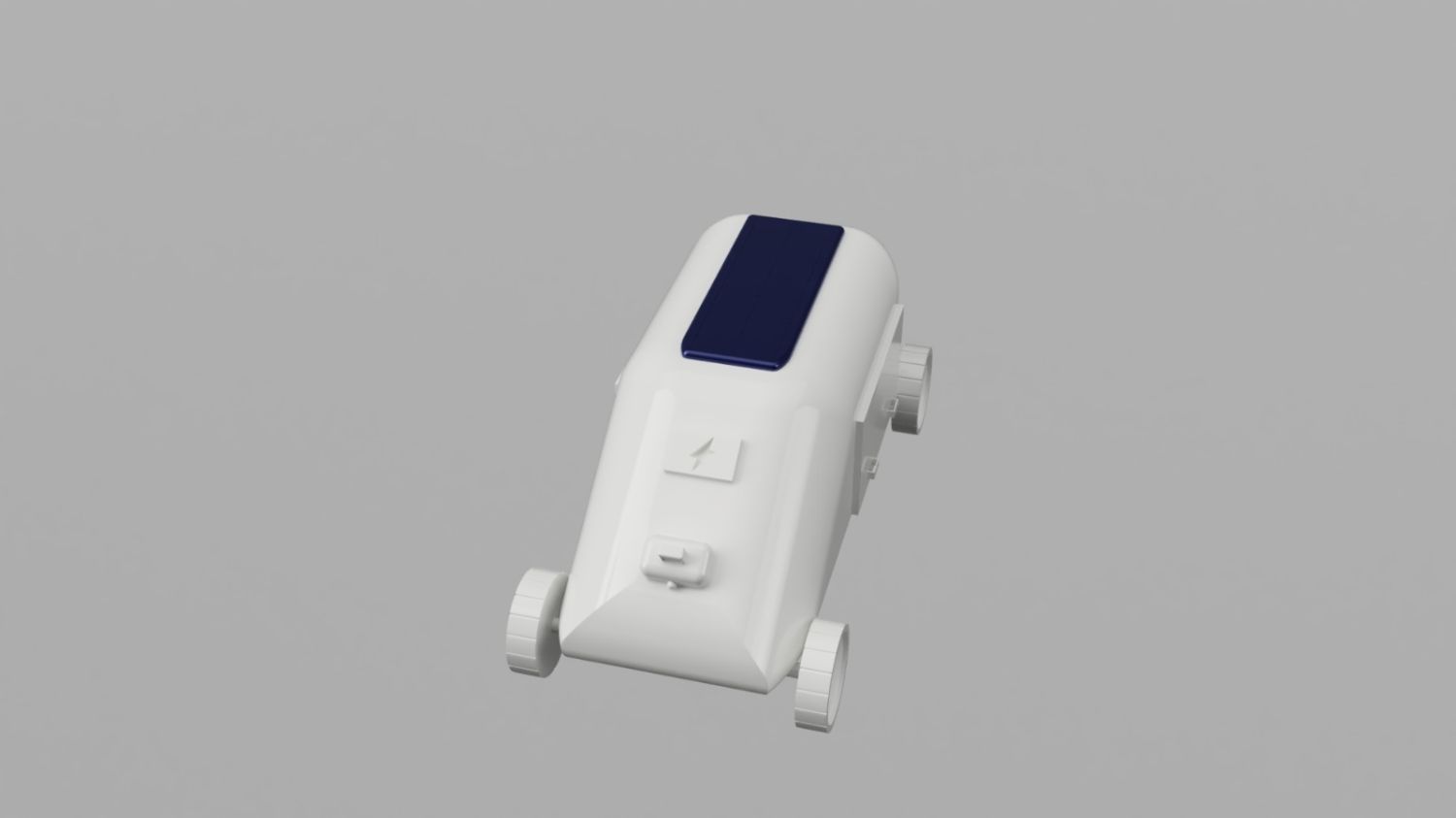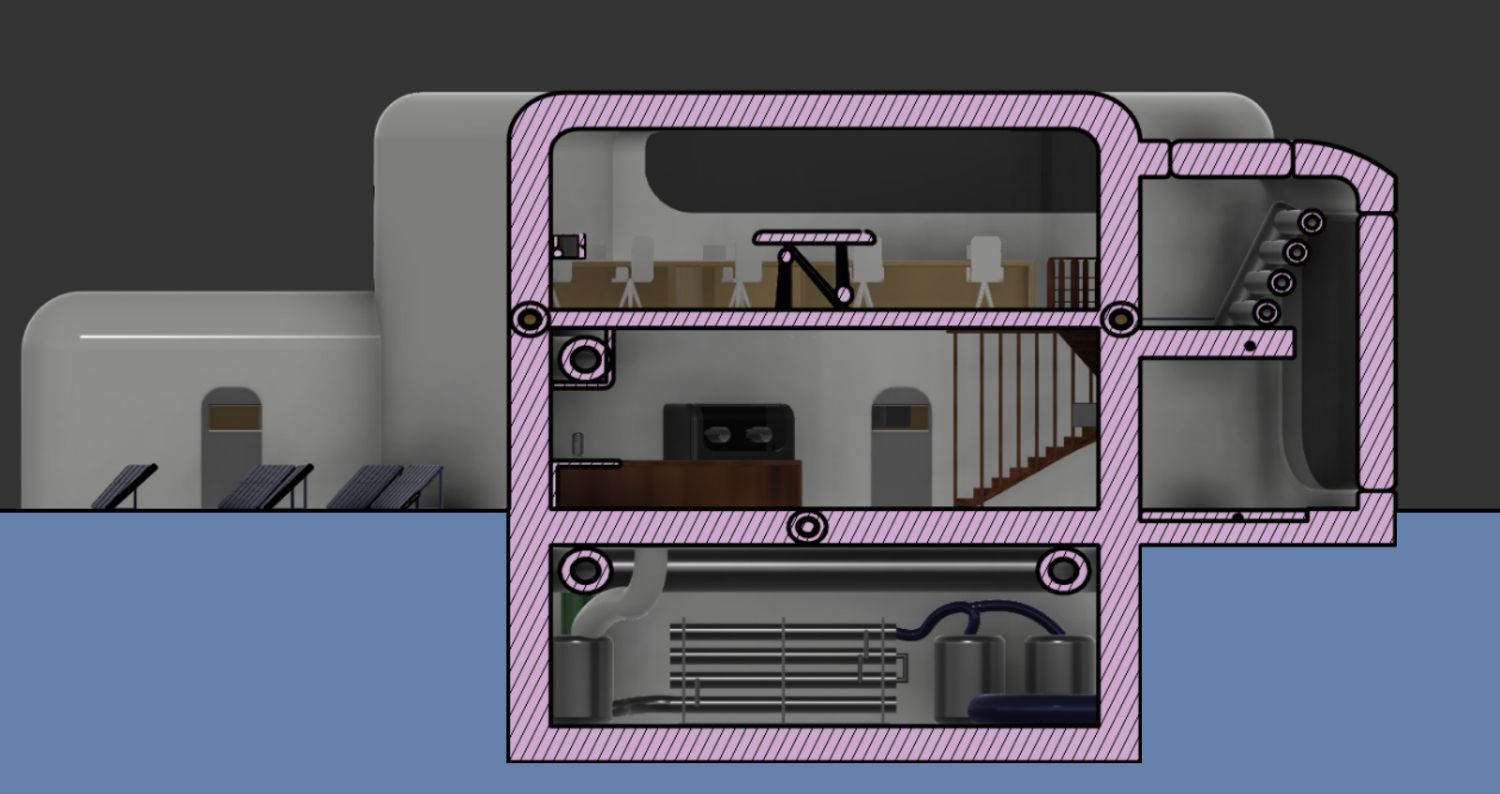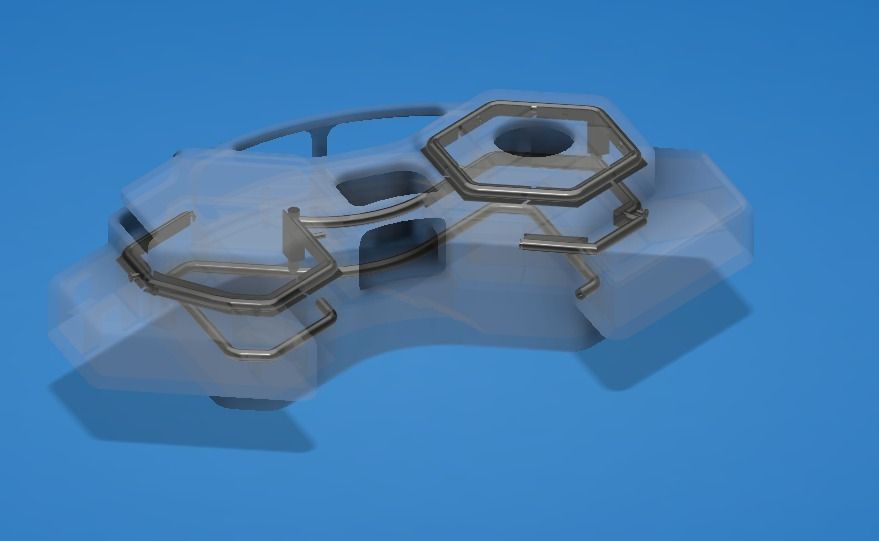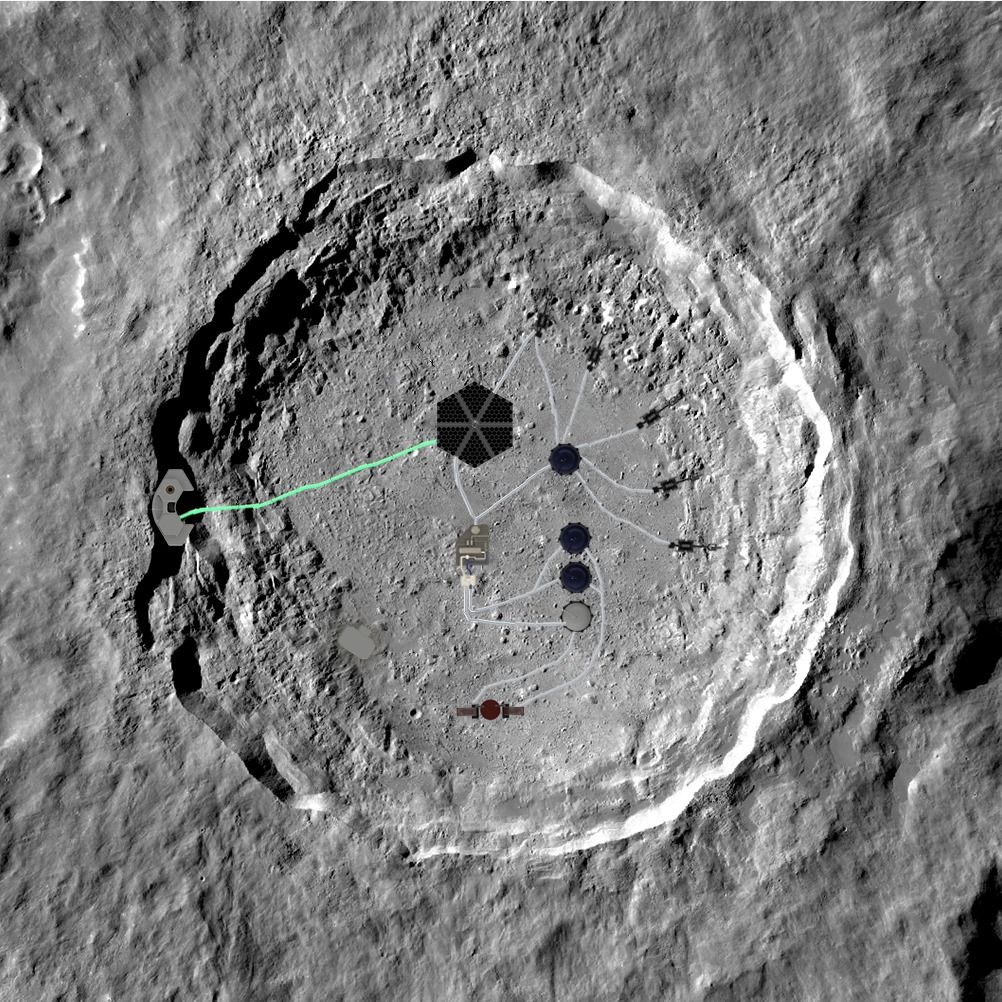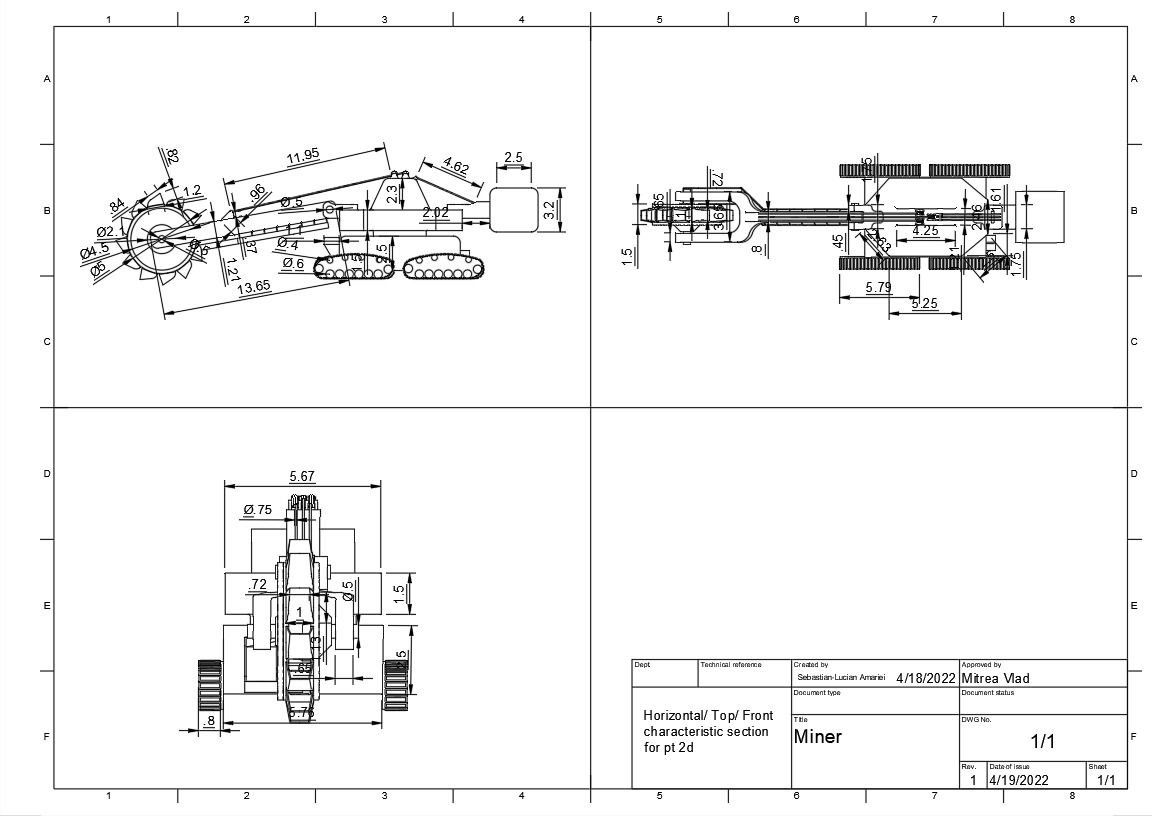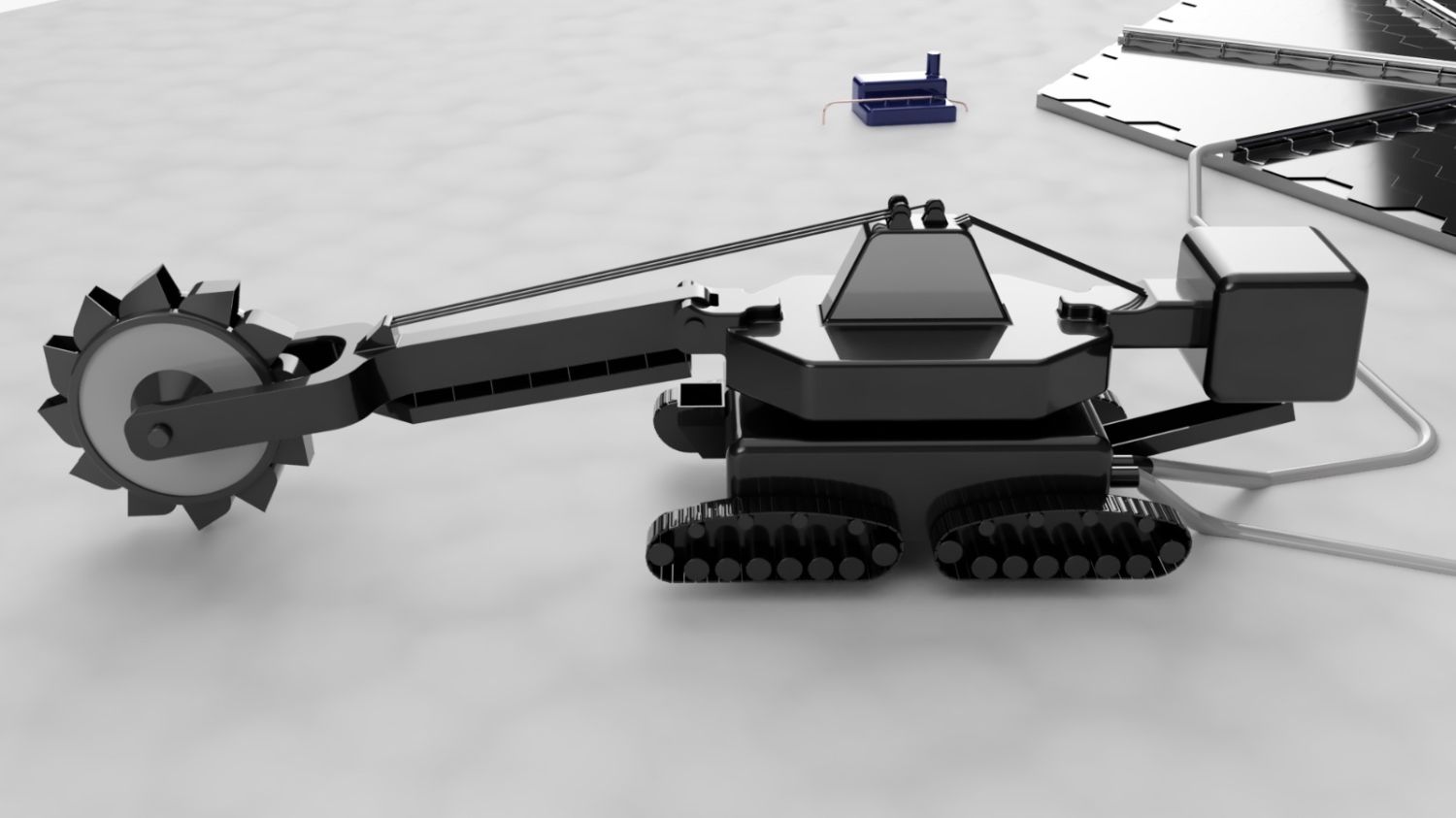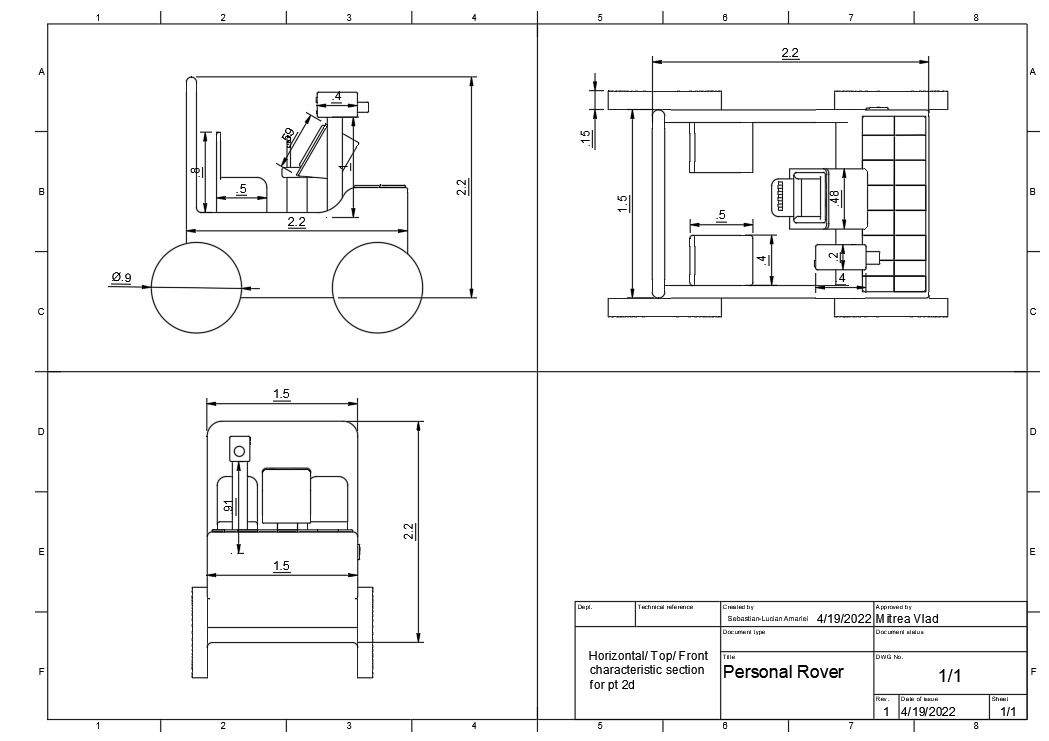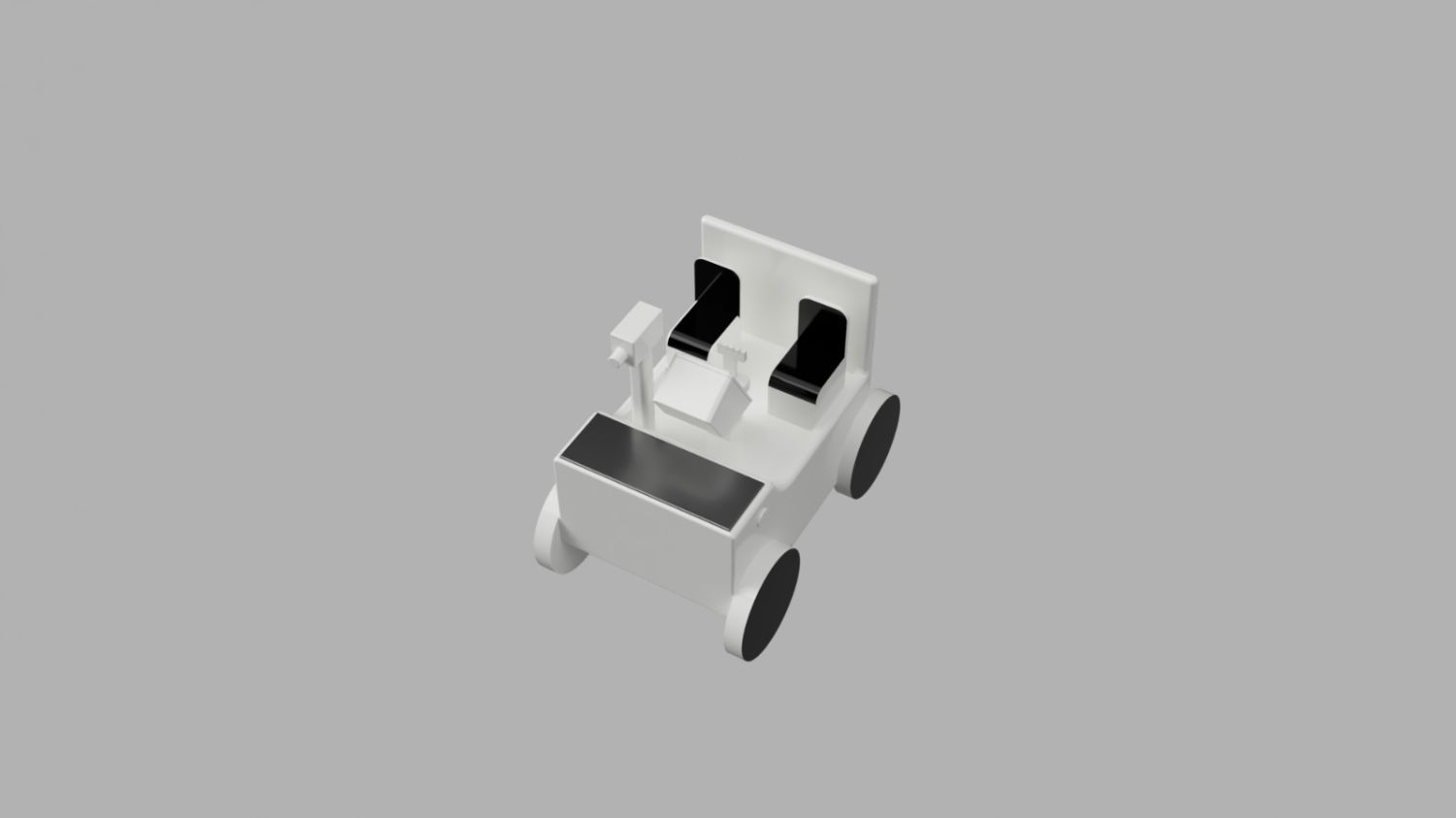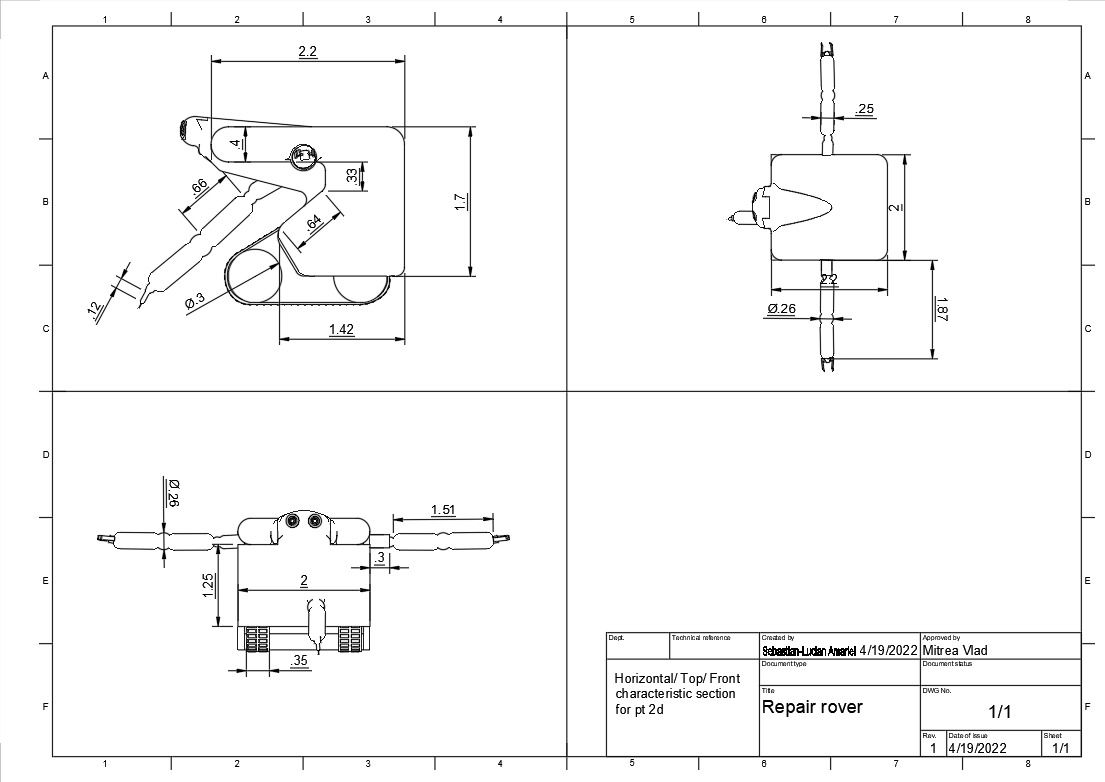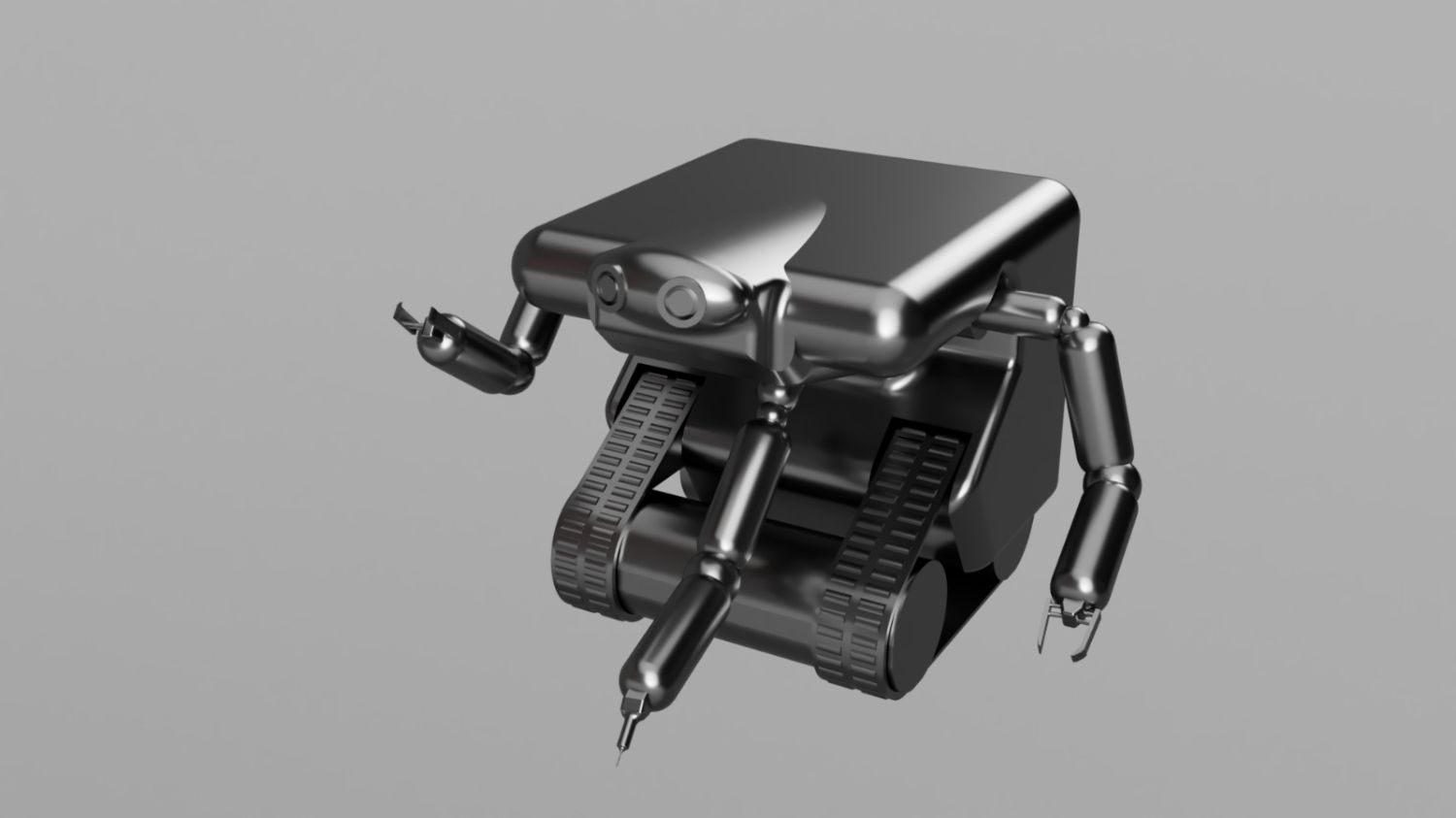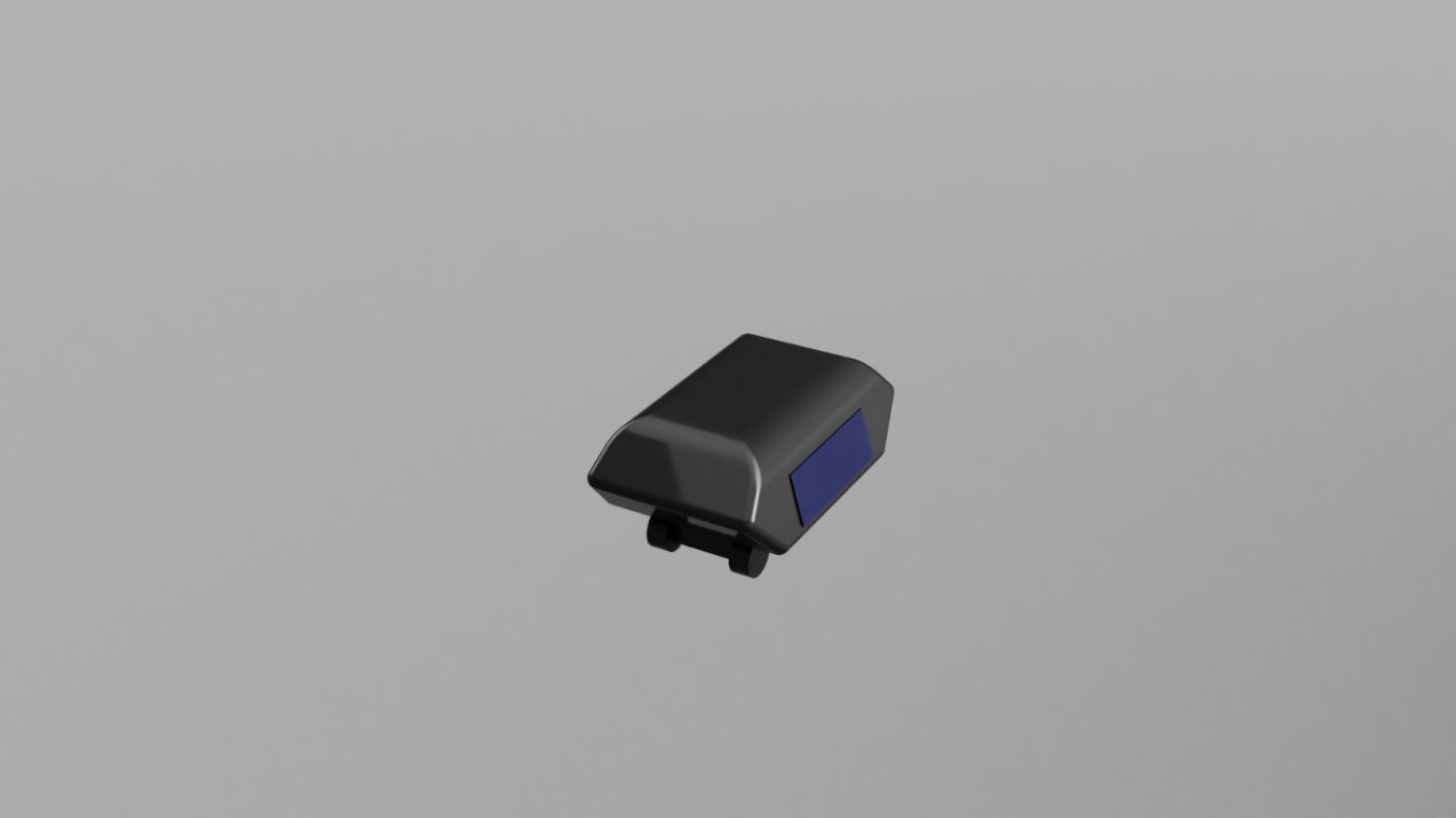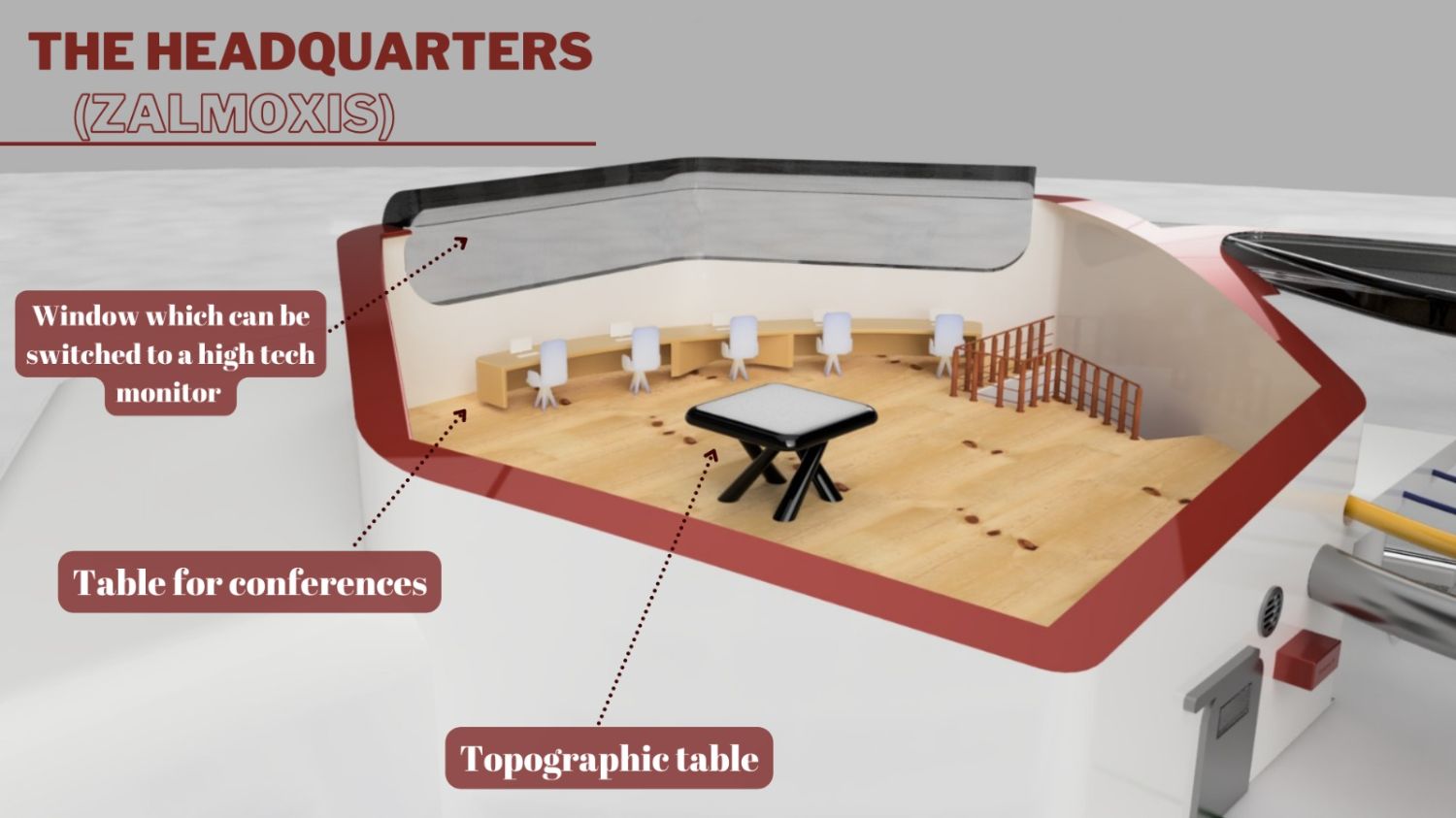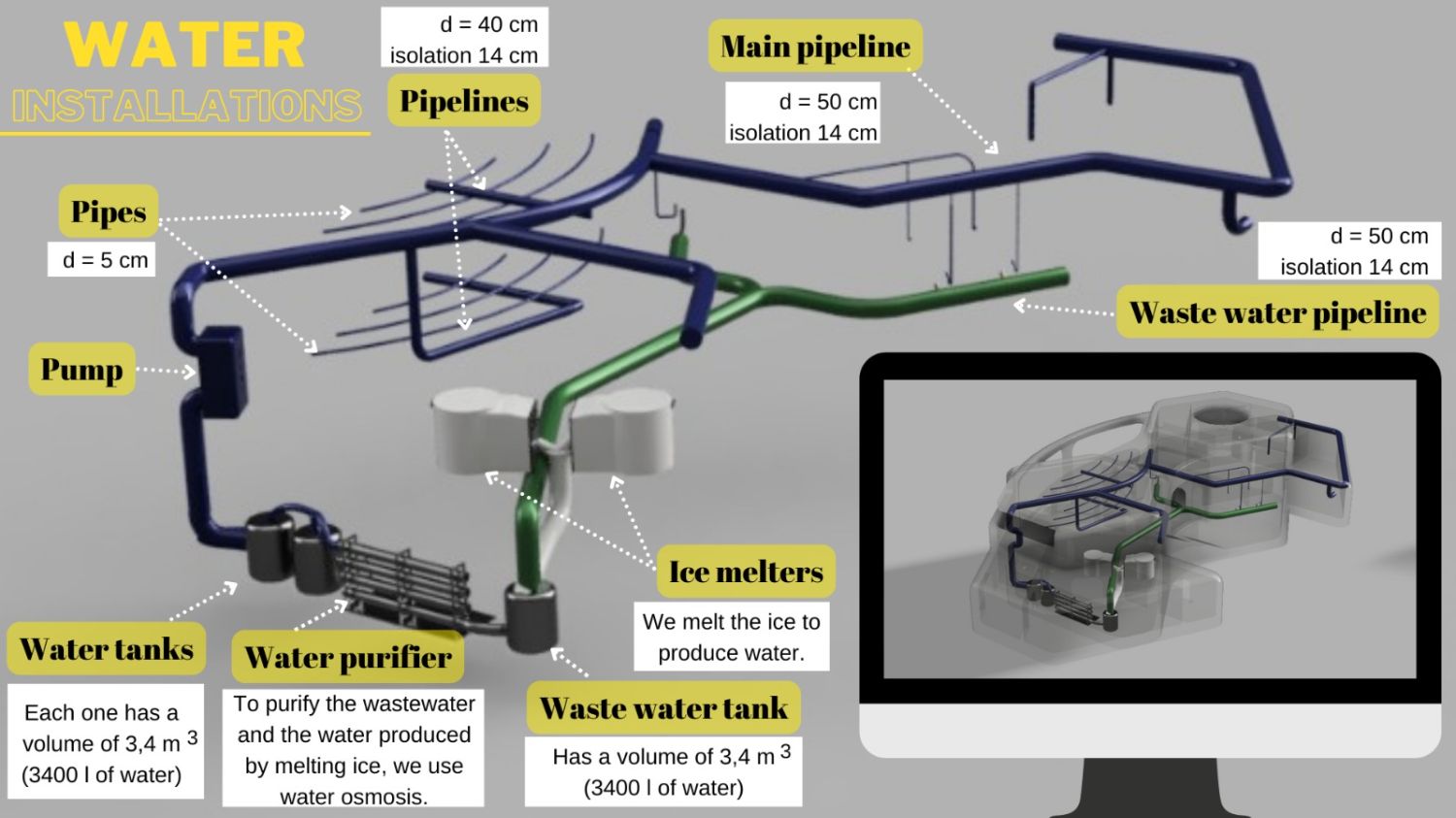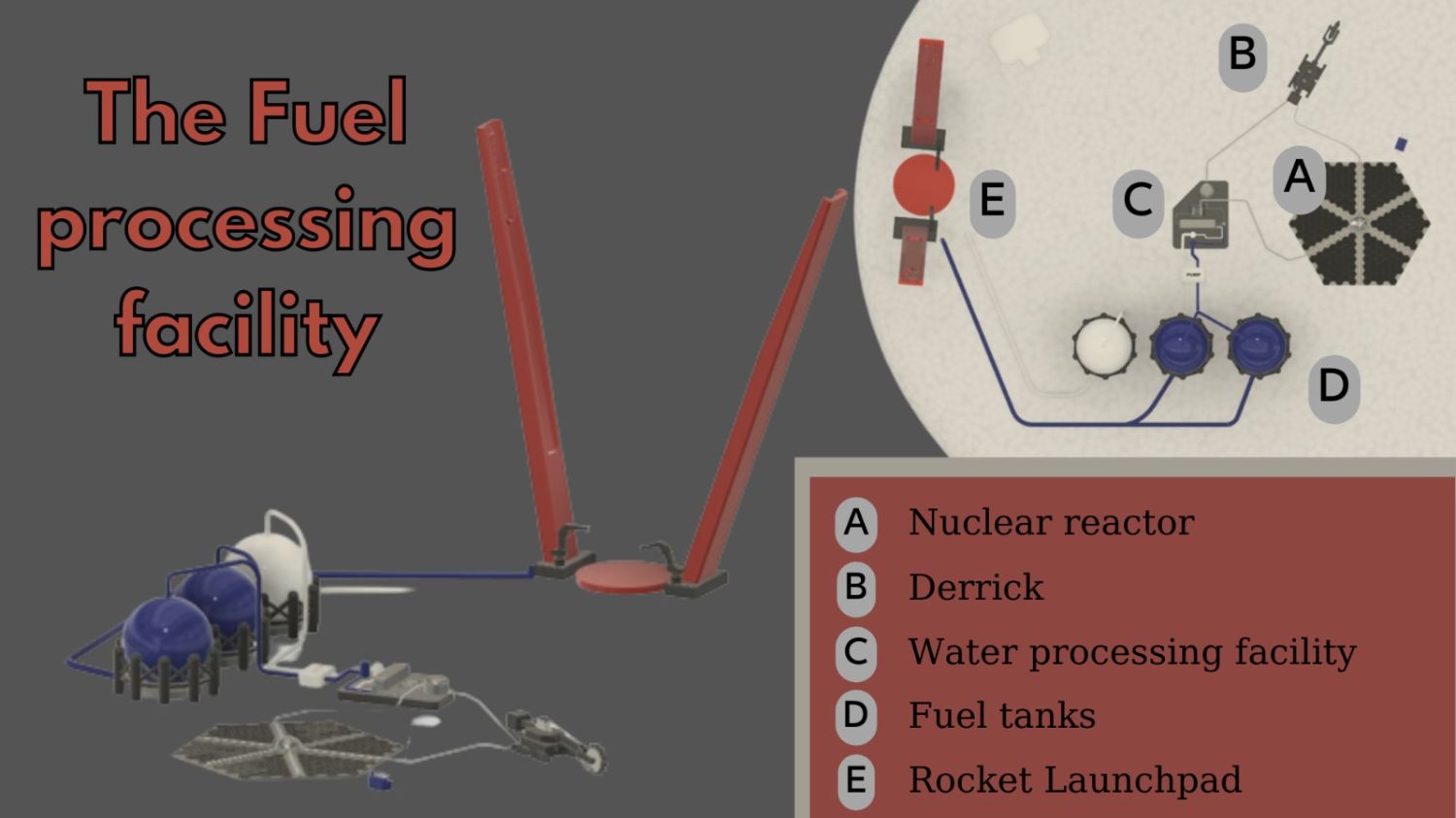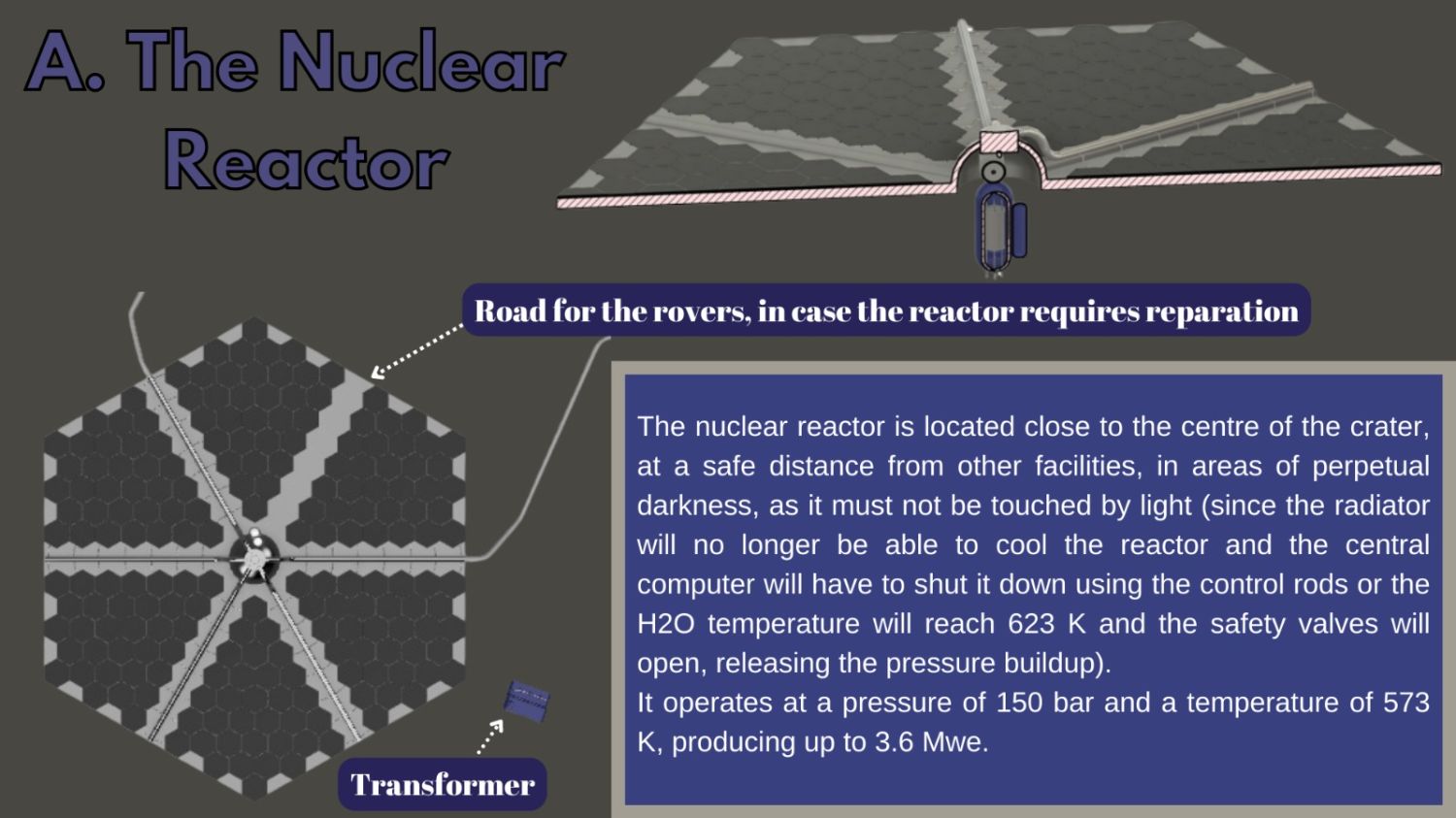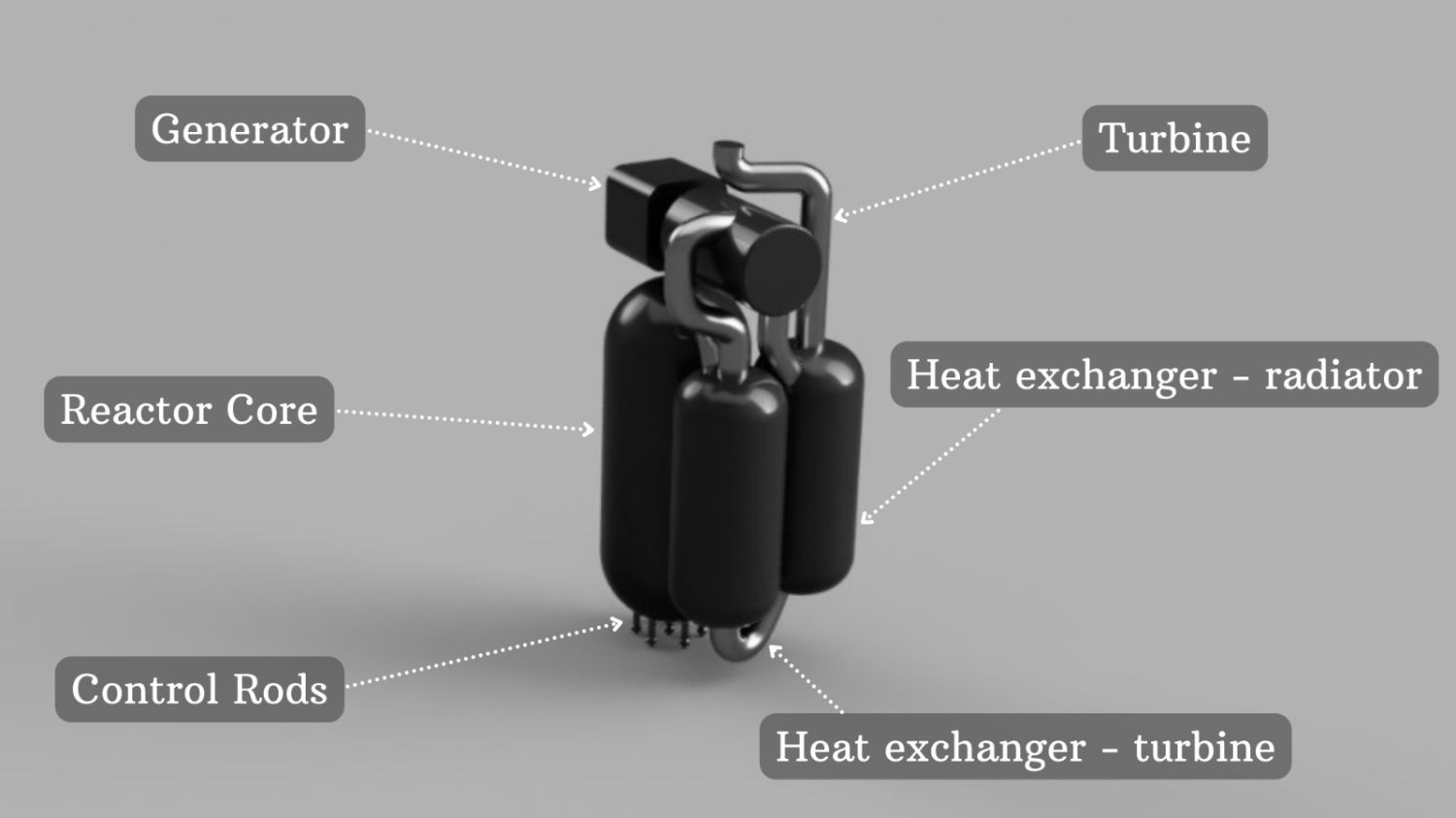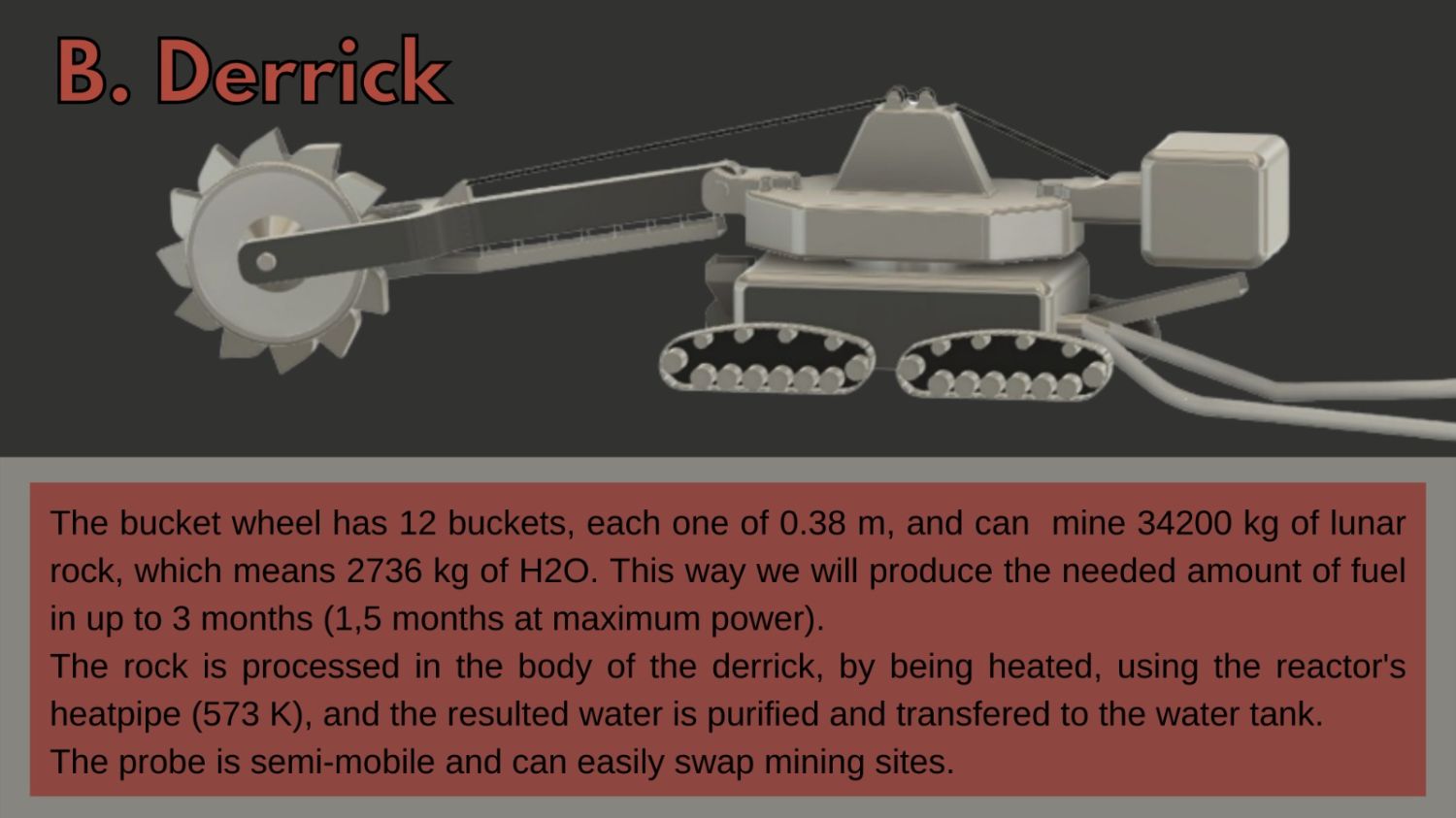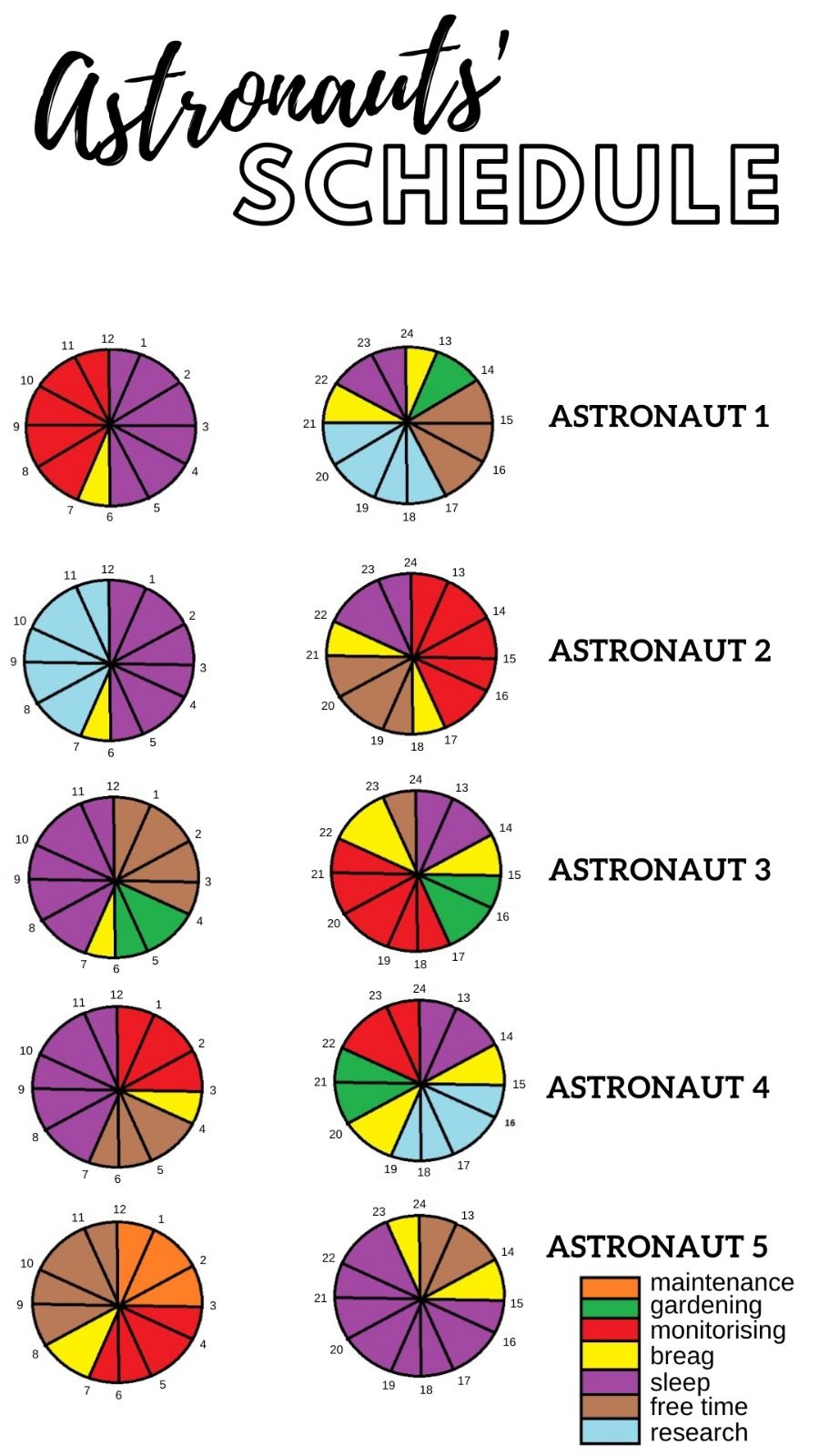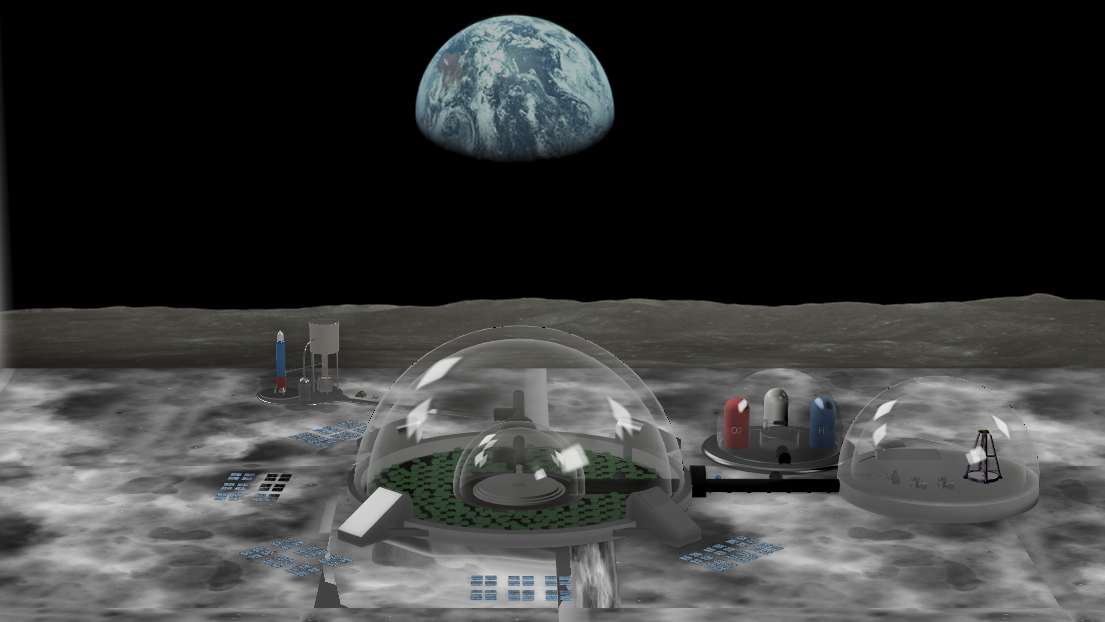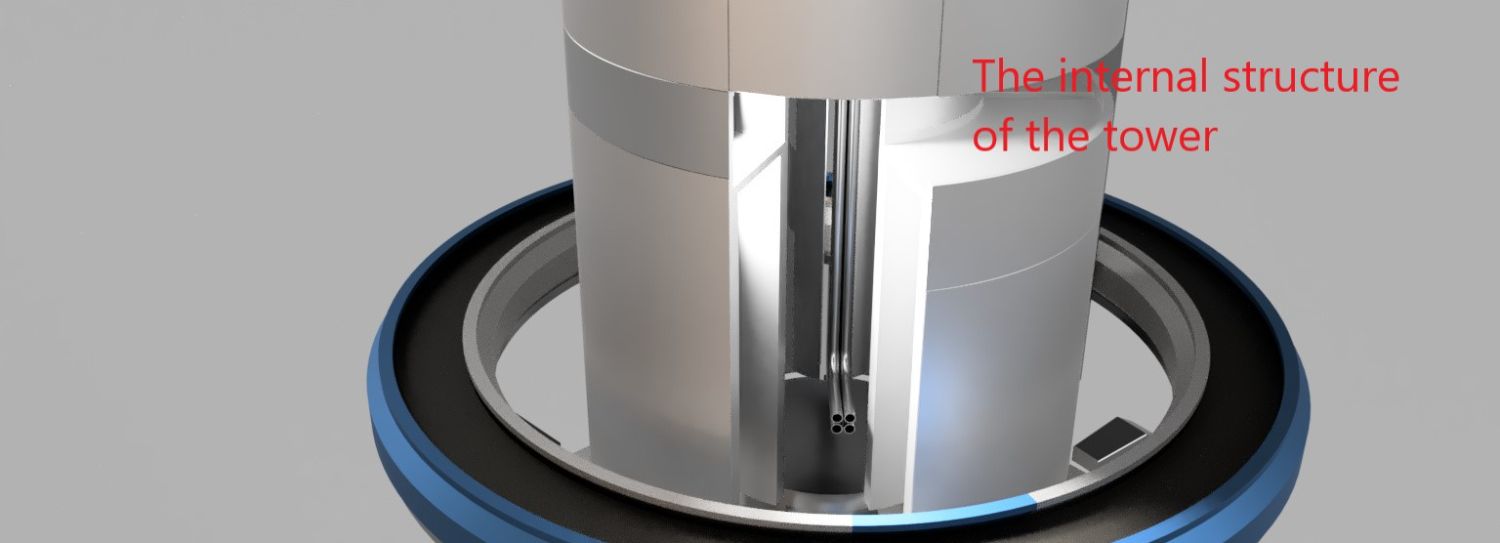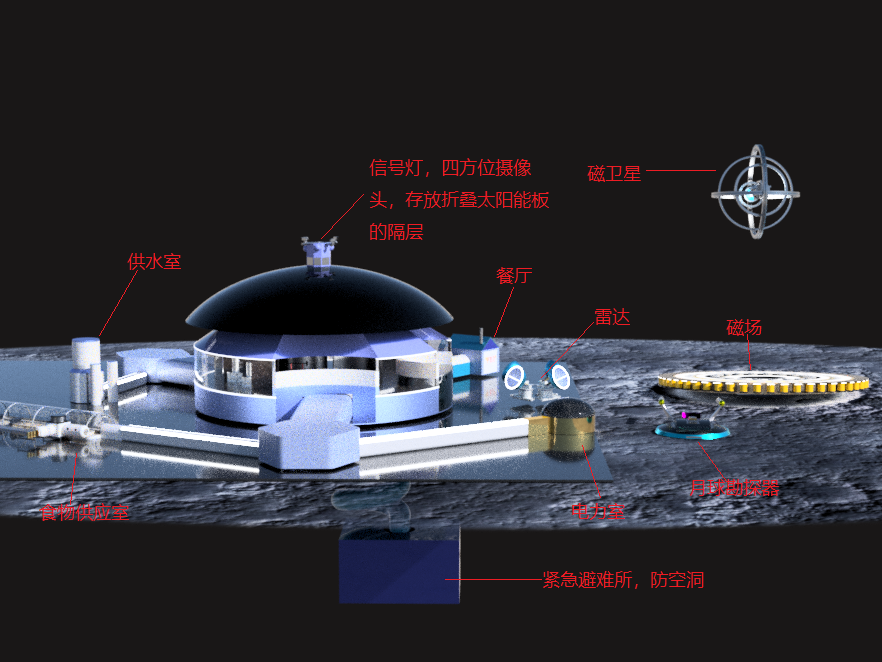Moon Camp Pioneers Gallery 2021-2022
In Moon Camp Pioneers each team’s mission is to 3D design a complete Moon Camp using Fusion 360. They also have to explain how they will use local resources, protect astronauts from the dangerous of space and describe the living and working facilities.
Team: Artemis
Colegiul National “Mihai Eminescu” Suceava Romania 17, 19 6 / 3 Third Place – ESA Member states
External viewer for 3d project
|
Project description
Duat is a home for up to seven astronauts, five of them being in the crew, while the other two are temporarily stationed, waiting for us to refuel their rocket. Meanwhile, they are going to help the crew in their daily activities. We have two distinct facilities, one of them is the Central Base, where the astronauts live and research the lunar territory, the other is a Fuel Station, where we produce fuel from water ice. In the Central Base, positioned at the crater’s illuminated edge, we have twelve areas: Zalmoxis (the headquarters, where the crew can have meetings and communicate with the Earth), Sarmizegetusa (living area, kitchen, relaxation space and bathrooms), Somnus (the bedrooms, one for each member of the crew, and a double bedroom for the extra two astronauts), Derzelas (the infirmary), Bendis (research area, where we analyze the lunar rocks), Gebeleizis (electricity), Dabatopienos (industrial space, where we produce water and supervise the industrial activity from the Fuel Station), Pleistoros (hangar), Xerxes (the farm), Dionis (chlorella plantations) and the basement (Silenus), where we keep our supplies and the installations. The Fuel processing facility is positioned in the dark area of the Shackleton crater, near the center. It has four components: Hestia (fuel factory), Kandaon (hangar), Hades (nuclear reactor) and the launchpad, where the rockets can land and be refueled. The fuel making process is automated, so there is no need for human interaction, it is enough for someone to supervise the whole process. |
|||
|
2.1 Where do you want to build your Moon Camp?
We chose to build our base at the South Pole, in the Shackleton crater. It’s one of the best locations for a base, since it preserves a surprising record of water and other volatile substances. Foremost, portions of the crater rim remain in almost year-round sunlight, while the crater floor is permanently dark. Measurements by the Lunar Prospector showed higher than normal amounts of hydrogen within the crater, which may indicate the presence of frozen water. So, while the light can provide us with solar energy, we can also mine the water ice from the dark areas to make water, oxygen and fuel. Second of all, Shackleton lies entirely within the rim of the immense Aitken basin, which is one of the largest known impact formations in the Solar System, and an exploration of its properties could provide useful information about the Geological structure of the Moon. 2.2 How do you plan to build your Moon Camp? Describe the techniques, materials and your design choices.
We are going to build components of the settlement on Earth. Each module is going to be sent to the moon along with robots, which will assemble the base by folding Kirigami. The modules can be easily assembled on the lunar surface, being a parametric construction system composed of perfect triangles forming hexagons. After the robots are done building, the astronauts are safe to join and set up the furniture and the industrial machinery. We will use the same technique to build the Fuel Station, each facility being brought from earth and connected by robots on the moon. We chose to have a hexagonal footprint because it provides a compact strength structure with exact structural support points. They are optimal in space management and the terrestrial setting is going to induce a positive atmosphere for our astronauts, helping them to accommodate. The only problem was the sharp angles, but we managed to reduce them to the bare minimum. The walls are made of titanium and silicate fiberglass for windows. As for the Fuel Factory, we used titanium as well. The Nuclear reactor’s case is made of lead, and the heat pumps are made out of mercury and stainless steel. 2.3 The environment on the Moon is very dangerous for the astronauts. Explain how your Moon Camp will protect them. (maximum 150 words)
We designed our base thinking about the radiations, meteorites and temperature fluctuations, the main protection offered by the outer wall structure facilitates the safety of life inside the base. The outer wall is 60 cm thick and consists of four layers: titanium (30 cm), lead and aluminium (1 cm), air (10 cm) and titanium (19 cm). Each entry in the base has a Sterilization room so that the lunar dust doesn’t enter our base. Also, all the interior doors are designed to seal the room. The reactor, in order to be functional and operational in the long term, is designed to be marginalized from the living area and the facilities connected with the main base (pipelines and cables) to have on their route between the two facilities automatic and manual control elements. In addition to these aspects, the fuel production and distillation facility can operate simple actions autonomously. |
|||
|
2.4 Explain how your Moon Camp will provide the astronauts with:
|
Water
|
Food
|
Power
|
Air
|
|
Before our arrival, our rovers will start mining for frozen water in the dark zones. They would bring it to the industrial space (Dabatopienos), where the ice is going to be melted and purified. The resulting water is transposed into an underground tank. In a matter of days, we would have the necessary amount of water for our daily activities, but, even so, we would bring water tanks with us from Earth. |
For the first few weeks, we need to bring food supplies with us, until our plants grow. And, even after that, we would periodically bring ailments from earth. |
Since we need a lot of energy for the Fuel Station, we decided to use a nuclear reactor for this function. This way, we can produce the necessary amount of electricity needed (3.6 Mwe/day), and we can also use the reactor’s heat to melt the water and power other facilities. |
Besides being edible, chlorella is a good provider of oxygen too. So, our main oxygen maker it’s going to be in Dionis. Xerxes will provide us with oxygen too. But, until the plants grow, we need to take oxygen from other sources. Considering this, we will bring oxygen with us for the first days, but we can as well bring liquid oxygen from the Fuel Factory. |
|
2.5 Explain what would be the main purpose of your Moon Camp.
Our main purpose is scientific (in the Central Base, we focus on research), but we have a commercial side too (the Fuel Station). Duat is a gateway for future missions to other distant planets, since the Moon has more take-off opportunities than Earth, and we will also refuel the coming rockets. For that, we built a Fuel factory, which is placed in the dark zone of the crater, near the center, since it is going to be easier to access the whole crater. We mine ice from the moon, with the derrick, melt it and transfer it to a water tank. After that, we use electrolysis to separate the hydrogen from oxygen, and liquefaction to turn them into liquids, and store them. This way, we will be able to fully refuel a rocket in up to three months. |
|||
|
3.1 Describe a day on the Moon for your Moon Camp astronaut crew.
Our crew works in shifts so that there is always someone awake to supervise the whole base. Astronaut 1 and Astronaut 2 wake up at 6 am. They exercise, take care of their hygiene and eat. At 7 am, Astronaut 1 is at the Dabatopienos, supervising the Fuel Factory and nuclear reactor until 12 pm. He has a one hour break, and after that, he takes care of the gardens for one hour. Between 2 pm and 5 pm, he is helping his teammates. After another one hour break, he starts researching in the laboratory, until 9 pm, when he ends his work and is free to relax. At 10 pm he goes to sleep. On the other side, at 7 am, Astronaut 2 is in the laboratory researching until 11 am, and after a one hour break, he takes Astronaut 1’s place and starts supervising. At 5 pm he ends his shift, and after a one hour break, he is free to help his crewmates. At 9 pm he ends his work, and at 10 pm he goes to sleep. Astronaut 3 and Astronaut 4 wake up at 2 pm. They exercise, take care of their hygiene and eat. Astronaut 3 is gardening for two hours (3-5 pm), and after that, he takes Astronaut 2’s place and supervises the Fuel Station for five hours. After a one hour break, he is free to give any kind of help to his other teammates. At 4 am he starts researching in the laboratory, and ends his tasks at 6 am. At 7 am he goes to sleep. Astronaut 4 is researching between 3 pm and 7 pm, takes a one hour break, and is gardening between 8 and 10 pm. After that, at 10 pm, he starts supervising the Fuel Station for five hours. He ends his shift at 3 am and for three hours is helping his teammates if needed, and goes to sleep at 7 am. Astronaut 5 wakes up at 11 pm, does his morning routine, and between 12 am and 3 am he maintains the base. After that, for four hours, he supervises the Fuel Station. After that, between 7 am and 2 pm, he is free to help any of his teammates, having a break between 8 and 9 am. At 3 pm he goes to sleep. |
|||


